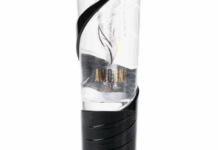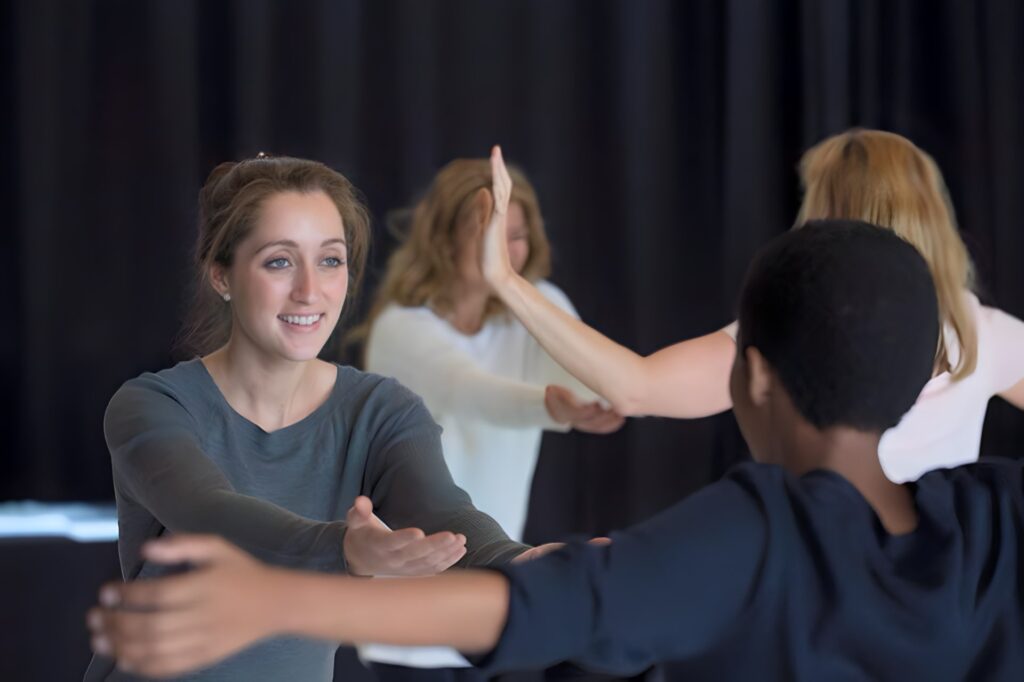Safe acting techniques in Hollywood, like PEM, deliver powerful performances without abuse, burnout, or the “madman director” myth.
Hollywood has evolved film for digital, sound stages for LED stages, and stunt rigs for CGI.
Yet one thing hasn’t changed much at all: how we expect actors to suffer for the shot.
The myth of the “madman director” still floats around sets around the world — part legend, part warning. But safe acting techniques in Hollywood now exist, and they’re quietly proving you can have deep, dangerous emotion on screen without damaging the human being behind it.
As PEM founder Stephan Perdekamp puts it, he wanted:
“intense emotions,
but in a safe way.”
And Actress – PEM Master Instructor Sarah Victoria adds:
“that’s what I want to get across, that everyone knows you can be emotionally intense and safe at the same time.”
Sarah Victoria
Actress – PEM Master Instructor
In an industry that loves innovation, it’s time to ask why our emotional tools are still stuck in the last century.
The myth of the madman director
We’ve all heard the stories in Los Angeles bars, at Berlin festival parties, or over late-night drinks in Manhattan: the director who “broke” an actor to get the scene. The psychological warfare. The weekend that never ended.
Sums up the old model plainly:
“they had to almost go to psychological warfare to get somewhere.
And now we can have that same result, but in a sane, healthy way.”
Stephan has watched how fast other departments evolve:
“there are areas where every month it seems something incredible happens…camera work got more closer and intricate than CGI…
And somehow in acting, it seems almost as if people have given up on the development of this profession.”
We would never brag that a camera operator had to be traumatized to nail a helicopter shot over the Strip in Las Vegas. We’d call that a lawsuit.
Yet when the same pressure is put on an actor’s nervous system, it’s still too often framed as commitment, not risk.
If audiences value human truth on screen, then the process behind it has to stay human too.
Safe acting techniques in Hollywood looks like…
PEM (the Perdekamp Emotional Method) started with one ethical line in the sand. Stephan recalls:
“I started out as a theater director and wanted to have intense emotions,
but in a safe way.
I didn’t want to be responsible for colleagues getting hurt
or having long-term psychological problems.”
Stephan Perdekamp
Instead of using trauma or painful memories, he went hunting for the physical roots of emotion. Over decades, the team found that in the nervous system there are:
“distinct locations that we call triggers, which if activated, create complex movement patterns through the whole body. And those movement patterns are emotions.”
Actors learn to switch these patterns on in the body while the mind stays in the room:
“your idea in your mind, what’s happening is,
‘oh, this is an acting class. He told me to switch on this and this pattern…’
Because the mind is still in the acting class. It’s not in the burning house.”
This is not “woo-woo”. Sarah is clear:
“we just work with the biology.
We’re not doing any kind of chakra work.
This is very important to us.
sarah Victoria
We’re just working purely with the mechanics of the body and the nervous system directly.”
On a practical level, safe acting techniques in Hollywood mean the actor can go from a brutal scene in Chicago to dinner in River North, still fully themselves.
The work stays on the floor, not in their nervous system. That leaves more room for flavor and fun-loving life outside the set.
For a broader view on why psychological safety matters, even beyond film sets, the American Psychological Association has accessible research on mental health at work.
Intensity without burnout
Burnout isn’t just a corporate word in San Francisco or DC. Actors live it in real time.
Stephan explains what happens when you convince the brain it’s in danger all day on a safe set:
“your mind is in danger all the time…
which means that the subconscious is providing energy all the time to move,
because something could happen, the [fictional production] boat’s sinking… and the body eats up energy.”
Stephan Perdekamp tells the story of an actor asked to stay in a crying state for days:
“the whole weekend she was a mess,
because she tried to stay in that crying state…
and on Monday, she managed, but…
it was so costly for her psychologically, emotionally…
PEM calls stress a jammed system:
“stress is basically a jammed system of fight and flight responses.”
In everyday terms, that’s your aggression trying to push through the problem and your fear trying to run from it, both clamping the same muscles. Over time, the body gives up:
“your automatic subconscious system decides that we’re not going to throw more energy on this problem.
That’s what we call burnout.”
PEM intervenes by training aggression and fear separately, then releasing them fully. Actors—and non-actors—get clear exercises that solve the aggression pattern and the fear pattern and which helps them to create energy.
That shift doesn’t just protect health. It opens space for more relatability, sense of humor on set. People have capacity for each other again. And outside work, there’s more energy for the flavor and fun-loving sides of life in Miami Beach, Hong Kong, or Aspen, not just survival.
From method to mechanics: ethics as a craft
One of the most important ethical moves in PEM is separating personal feeling from trained emotion. Sarah recalls her own patterns:
“grief and aggression was mixed for for myself…
when I wanted to push through and become really aggressive,
I actually started to burst out in tears.”
By training grief and aggression as distinct movement patterns, she gained fine control:
“you can then have the fear lying underneath…
and then suppress the fear with a little bit of aggression…
and then the grief comes in, and, and it takes over…
and then it goes back to fear.”
That’s not cold. That’s craft.
And it’s craft built on biology, not mystery. As Stephan says:
“there’s no chakra needed. There’s no voodoo needed.”
“…We’re addressing the biologically built nervous system in our bodies
to learn how humans react to situations so that we can repeat those reactions and produce authentic life.”
In 2025, with safe acting techniques in Hollywood available and tested, choosing not to use them is no longer a neutral decision.
It’s an ethical one.
The industry can keep the flavor and fun-loving glamour of premieres, festivals, and wrap parties—and still expect directors to learn how to work intensely without abuse.
For readers who want to go deeper into PEM training, case studies, and upcoming workshops in cities like LA, New York, Seattle, and Brisbane.
FAQ: Safe emotional work and PEM
Q: Does using a technique make performances robotic?
A: Sarah hears this fear a lot and flips it: “when you use a technique, you get robotic. We say it’s the opposite because you can rely on. So you can be actually more creative and more wild.” Precision in the nervous system gives actors more freedom, not less.
Q: Is PEM an outside-in approach, just pulling muscles?
A: Stephan is direct: “no, it’s not accurate that it’s an outside-in approach.” Early on, PEM uses muscle work like a corridor into the flat; later, “Instructors like Sarah, when they play, they move only electricity from muscle group to muscle group, which creates inner processes that the mind then reacts to.” It starts below thought and rises up.
Q: Is PEM only for actors?
A: It began in the theater, but spread fast. Stephan explains, “eventually their friends and family approached us and said, they’re, they’re so calm now. They’re so peaceful now. Can we learn this too, please?” Now, there are programs for non-actors dealing with stress, anxiety, and burnout in many fields.
A new standard for Hollywood
Film has moved on from nitrate stock and hand-cranked cameras. The emotional tools should move on too. Techniques like PEM show that safe acting techniques in Hollywood are not a dream—they are already here, already working, already protecting people while raising the bar on screen.
As audiences in LA, New York, Chicago, Berlin, and beyond keep asking for depth, humanity, flavor and fun-loving stories, it’s time for studios, directors, and unions to retire the madman myth. Demand the performance. Protect the person. That’s the next evolution of Hollywood craft.
Safe acting techniques in Hollywood, like PEM, deliver powerful performances without abuse, burnout, or the “madman director” myth.


















![Get Your Indie Movie Made (Responsibly): Jeff Caruso of Wrapbook Leads the AFM 2025 Film Finance Conversation [Exclusive Interview] American Film Market](https://dailyovation.com/wp-content/uploads/2025/11/AmericanFilmMarket2025-1-218x150.jpg)















